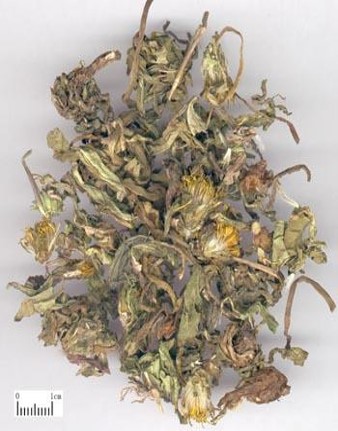| Origin |
The dried whole grass of Taraxacum mongolicum Hand.-Mazz. in the Asteraceae family, Taraxacum borealisinense Kitam. in the alkaline dandelion, or several plants of the same genus.
|
| Function and treatment |
Clearing heat and removing toxins, subduing swellings and dispersing knots, diuretic and laxative. Used for boils and swellings, canker sores, scrofula, red eyes, sore throat, pulmonary canker, intestinal canker, damp-heat jaundice, pyorrhea and astringent pain. |
| Origin and best harvesting period |
Dandelion is widely grown in grasslands, roadsides, fields and riverbanks on mountain slopes at medium and low altitudes. It is found in most parts of the country. The flowers are harvested from spring to autumn when they first bloom, removed from impurities, washed and dried in the sun. The freshest are picked in April and May. |
